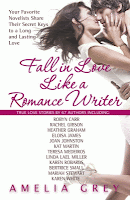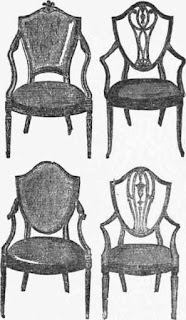I had an interesting conversation recently regarding present-day misconceptions about the past. In this conversation we floated the idea that historical romance had created its own, essentially false, depiction of life during the Regency. We talked about whether or not these inaccurate ideas were so deeply embedded that an accurate depiction of them could be roundly denounced.
There is a difference between history and historical fiction. In the case of the former, the point, one hopes, in writing about history, is to be accurate. Fiction serves a different role. Fiction, at some level, has to recognize the ways in which, say, a Regency Romance, privileges the needs of modern readers over historical accuracy.
What I constantly find odd, however, is that way in which we sometimes talk about the past as if those people were a different species. There is, I think, a speed at which evolution progresses — over millions of years, punctuated by the odd catastrophe that challenges the very survival of a species, and the speed at which social culture evolves. Millennia vs. a few years.
The human sex drive is an evolutionary survival tactic and our bodies have evolved to make procreation likelier than not. The way human cultures deal with that fact seem to be fairly fluid. I think historical researchers sometimes conflate cultural sexual norms with the human sexual drive.
In the West, we have this notion of sexual repression that comes to us from the Victorian age — women weren’t supposed to like sex, everyone was all uptight and people, particularly women, who appeared to embrace their sexual nature were punished. We could talk all day about the ways in which Western cultures have attempted to control and repress human sexuality. There is plenty of evidence of that.
However, no amount of social repression negates the fact that sex feels good. Our bodies are hard wired for sexual desire and to experience sexual pleasure. Repression is bound to fail. It cannot help but fail. We exist today because it did, in fact, fail.
My point, after all that, is that this trope of the innocent, unsexual female who has no curiosity or drive to engage in sex (and I do mean the act) seems to me to be fundamentally false. Of course there were people who refrained from sex until marriage, but there simply had to be a lot of people who didn’t. The idea that women didn’t have any non-social way to control their fertility also seems suspect to me.
The Heyer-esque innocent, however compelling she is on the written page, with an almost complete denial of female sexual agency sometimes bothers me and is, I think, more a representation of Heyer’s social millieu than the actual Regenecy — In other words, she wrote about a world as her culture norms imagined it ought to have been. Lydia in Pride and Prejudice is an example of that tension.
So, after all these ill-formed thoughts, what do you think about the accuracy of Regency Romance and do you care?












